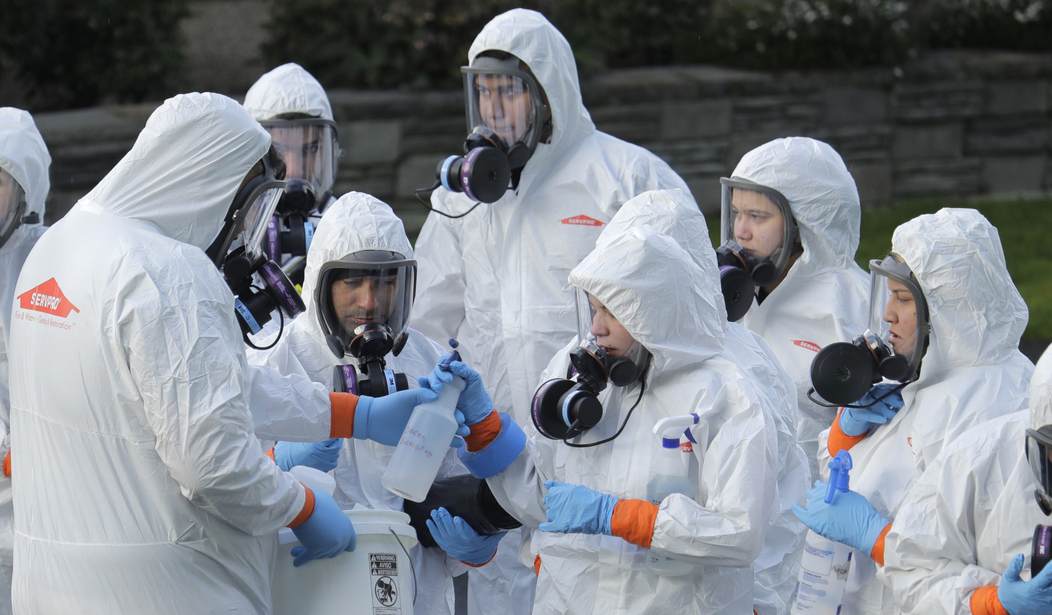I hate to be that guy, but I can’t help wondering if the growing panic about the coronavirus is rooted in politics. This country has been through pandemics before, and yet this seems to be the first time that panic has really started to spread faster than the disease itself.
Why is there all the panic now? During the H1N1 outbreak that started in 2008, we didn’t see Disneyland and Disney World close or see the NFL or any other sports leagues suspend their seasons to prevent the spread of H1N1. Today, we’re seeing colleges and universities closing up and having students take classes remotely. If you’re in need of hand sanitizer or toilet paper, well, good luck… they’re hard to come by right now.
The coronavirus is a serious situation, for sure, but so was H1N1. According to the CDC, from April 12, 2009, to April 10, 2010, there were an estimated 60.8 million cases, 274,304 hospitalizations, and 12,469 deaths in the United States due to H1N1. Throughout that whole period, you could go to Disney World or a baseball game. In 2010, March Madness wasn’t canceled, and the media cared more about Obama’s bracket than his response to H1N1.
Globally, 80 percent of those who died from H1N1 (also known as swine flu) were younger than 65. This, the CDC explains, was an anomaly. While health experts have warned that those over 60 with underlying health issues are the most at risk of death if they contract the coronavirus (similar to typical seasonal influenza epidemics), the H1N1 virus “primarily affected children and young and middle-aged adults.”
So, why is there public panic now, but there wasn’t so much in 2009?
“There wasn’t any media panic,” Rush Limbaugh recalled on his show Thursday. “The Republican Party did not politicize it at all. They made not one single effort that anybody can find or remember to try to make political hay out of it. It was treated as a health issue from top to bottom.”
He added, “The numbers with the coronavirus are not even close. They are barely a fraction of a percentage compared to the swine flu.”
“What was different was we had a Democrat in the White House and so the media didn’t want to be critical of the government.”
As Rush Limbaugh noted, in the United States, there were nearly 300,000 hospitalized with H1N1, yet we don’t even have that many cases of coronavirus worldwide yet. “Three hundred thousand hospitalized in the United States alone. You don’t even remember it. You know why? Because Barack Obama was president, and he was God, and we couldn’t be critical. We had to build him up and promote him like nothing else we’ve ever seen before,” said Limbaugh.
There’s something else I think Rush missed. When the H1N1 outbreak happened, we were still in the middle of a recession. Obama and the Democrats passed their stimulus plan, and they were banking heavily on it producing results. It didn’t, of course, but that’s a whole other discussion. The media at the time, heavily pro-Obama, wanted to see Obama succeed and for him to turn the economy around. Imagine if, in the middle of a recession, Disney parks closed, the NBA, MLB, NCAA, etc., all suspended their seasons and schools closed down. It would have prolonged the recession (which ended officially in July 2009) and made the recovery (already the worst since the Great Depression) even longer. Is that why we didn’t see the media piling on the way they are now and encouraging panic in the government’s response to the outbreak?
By any measure, the Trump administration has handled the coronavirus better than the Obama administration handled H1N1, but you wouldn’t know it if you watch the mainstream media—which are actively hoping that the outbreak will doom Trump’s reelection. Compare that to the way the media played defense for Obama during the H1N1 outbreak. As the Media Research Center noted, at the time the media basically avoided blaming the Obama administration when vaccine production for the H1N1 virus fell way behind their projections. The Obama administration also failed to adequately deal with other outbreaks, such as bird flu and Ebola, without getting blamed for them, and without the panic we’re seeing with coronavirus.
As Rush noted, most people barely even remember the swine flu outbreak. Yes, it was bad, and lots of people got sick and died, but we got through it. Life didn’t stop either. Perhaps if the Obama administration had done what the Trump administration has, and if the sports leagues had all suspended games, theme parks and schools all closed down, the spread of H1N1 domestically could have been contained better and fewer people would have died, but we’ll never know.
The full impact of all the efforts being made to slow the spread of the coronavirus (public and private) probably won’t be known until next year, and should the numbers be significantly better than H1N1, we’ll look back on everything that’s happening now and be glad it happened. The economic impact of these closures will be temporary, and they may actually work, but it’s still hard to ignore the role politics is playing with how the media is covering this outbreak.
_____
Matt Margolis is the author of Trumping Obama: How President Trump Saved Us From Barack Obama’s Legacy and the bestselling book The Worst President in History: The Legacy of Barack Obama. You can follow Matt on Twitter @MattMargolis










